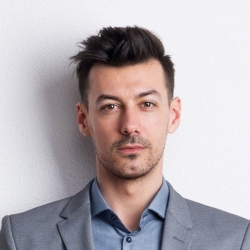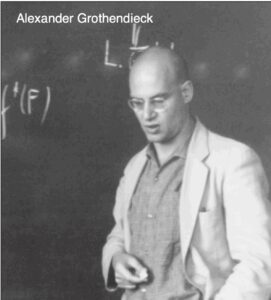A notable discovery has changed the narrative on aging: proline, a simple amino acid, is now at the forefront of scientific exploration to rejuvenate aging cells. Far from the realm of science fiction, this finding introduces a new chapter in the study of aging, revealing the potential of proline to reverse time at the cellular level. By introducing proline into cells that have ceased their division cycle and are showing signs of aging, researchers have revealed significant improvements in cellular functions. This journey to the heart of cellular rejuvenation through proline supplementation opens up exciting possibilities not only to prolong life but also to enrich its quality, promising a future in which the decline of aging can be significantly mitigated.
In a groundbreaking study that could turn the tide in our ongoing battle against the aging process, Professor Stelios Andreadis of the University at Buffalo, along with a team of researchers, has revealed how the amino acid proline can breathe new life into stem cells. aged mesenchymal cells. (MSC). This research, detailed in Cell Reports, highlights the potential for proline supplementation to significantly improve mitochondrial function and promote mitophagy, offering a ray of hope for reversing the hallmarks of aging.
Mesenchymal stem cells, which have stopped dividing and show signs of aging, were found to have a reduced capacity to produce proline, a key player in cellular stress response and bioenergetics. Professor Andreadis clarified this finding and noted: “Sensescent MSCs exhibited severely compromised mitochondrial respiratory chain activity and this was combined with the accumulation of depolarized mitochondria due to defective mitophagy.” This observation underlines the fundamental role of proline in maintaining cellular vitality.
The researchers embarked on an innovative approach to rejuvenate these cells. By supplementing aged MSCs with proline, they observed a notable improvement in mitochondrial function. This process was driven by the activation of AMP-activated protein kinase alpha (AMPK) and the upregulation of Parkin, crucial components in the initiation of mitophagy, the cellular method of cleaning house by selectively degrading damaged mitochondria. This not only improved mitochondrial clearance, but also reduced several indicators of aging, such as DNA damage and senescence-associated beta-galactosidase activity.
Elaborating on their methodological approach, the research team provided proline to aged MSCs in a carefully controlled environment, monitoring the effects over time. Professor Andreadis shared: “Proline induces mitophagy by activating AMPK and upregulating Parkin expression, enhancing mitochondrial clearance and ultimately restoring cellular metabolism.” This idea is particularly compelling and suggests a profound impact of seemingly simple molecules on the complex aging process at the cellular level.
Interestingly, the team also found that the positive effects of proline supplementation were not dependent on its degradation by proline dehydrogenase (PRODH), indicating that the presence of proline itself, rather than its metabolites, was key to rejuvenating the aged cells. “Knocking down PRODH had no significant effect on the ability of proline to restore mitochondrial function and autophagy flux in senescent cells,” commented Professor Andreadis, pointing to a sophisticated mechanism at play.
This study not only sheds light on the intricate dance of cellular metabolism in the context of aging, but also opens the door to new therapeutic strategies aimed at mitigating mitochondrial dysfunction associated with aging. Restoring the regenerative potential of aged stem cells through proline supplementation could lead to innovative anti-aging therapies.
Professor Stelios Andreadis and his team have masterfully combined meticulous observation with innovative experimentation, improving our understanding of metabolic interventions to combat age-related diseases. In his hands, proline goes from a molecule of interest to a promising agent for extending lifespan and rejuvenating aging tissues, marking a significant advance in the science of aging. His research not only highlights the potential of proline but also marks the beginning of a new chapter in our fight against the aging process.
Magazine reference
Debanik Choudhury, Na Rong, Hamsa Vardini Senthil Kumar, et al., “Proline restores mitochondrial function and reverses aging characteristics in senescent cells,” Cell Reports, vol. 43, no. 113738. DOI: https://doi.org/10.1016/j.celrep.2024.113738
About the Author

Stelios T. Andreadis received his master's degree in Applied Mathematics and his master's and Ph.D. degree in Chemical Engineering from the University of Michigan. She then completed postdoctoral training at the Center for Engineering in Medicine at Harvard Medical School, where she worked in the areas of gene therapy, tissue engineering, and regenerative medicine. He currently serves as a SUNY Distinguished Professor of Chemical and Biological Engineering, Biomedical Engineering and a member of the Center of Excellence in Bioinformatics and Life Sciences at the University at Buffalo, State University of New York. He served as Director of the Stem Cell in Regenerative Medicine (SCiRM) Training Program which was funded by NYSTEM to train students in stem cell biology and bioengineering and stem cell applications in regenerative medicine (2016-2021). He is the founding director of the Center for Cell, Gene and Tissue Engineering (CGTE), which was established two years ago to promote interdisciplinary research and education in these areas. He served as chair of the CBE department for two terms, from 2012 to 2018.
His research interests span a broad spectrum, from fundamental to technological and preclinical/translational research. He has made significant research contributions in the areas of stem cell bioengineering; engineering and regeneration of vascular, skin, muscle and glandular tissues; molecular design of biomaterials; protein and gene delivery, and stem cell senescence and aging. He co-founded a new company (Angiograft, LLC) to commercialize cell-free vascular grafts that were developed in his laboratory as arterial replacement grafts for the treatment of cardiovascular diseases. He has been a guest speaker at conferences and in many departments across the country and internationally. To date, his work has resulted in more than 145 peer-reviewed publications, 32 conference proceedings, 90 invited presentations, and more than 300 conference presentations. His group's publications appeared in leading journals including Cell Stem Cell, Nature Communications, Science Advances, Advanced Science, Advanced Functional Materials, Advanced Healthcare Materials, Cell Reports, Stem Cells, Journal of Cell Science, FASEB J., Cardiovascular Research , Molecular Therapy. , Journal of Virology, Journal of Investigative Dermatology, Gene Therapy, Biomaterials, Tissue Engineering, Annual Reviews of Biomedical Engineering and others.
His work has been continuously funded for 20 years by federal, state, and private foundation sources, including NIH, NSF, the New York State Stem Cell Fund (NYSTEM), JDRF, the John R. Oishei Foundation, and the Whittaker Foundation , for a total of more than $25. million. Recently, she led a team of UB and RPCI researchers that received a NYSTEM grant to launch a new training program focused on stem cells in regenerative medicine (SCiRM).
For his work, he received several awards, including the Whitaker Foundation Young Investigator Award (1999), NSF CAREER Award (2000), Outstanding Young Investigator Scholar Award (UB, 2003), Outstanding Scholar: Sustained Achievement Award (UB, 2009) and the SUNY Chancellor's Award for Excellence in Scholarship (2014). He was elected to the College of Fellows of the American Institute of Medical and Biological Engineering (AIMBE, 2009), the Biomedical Engineering Society (BMES, 2016), the American Institute of Chemical Engineers (AIChE, 2022), and the American Association for the Advancement of Science (AAAS, 2022). In 2018, he was promoted to the rank of SUNY Distinguished Professor, the highest rank in the SUNY system of colleges and universities.
He has mentored more than 115 mentees, including 35 Ph.D. and 22 master's students, 7 postdoctoral fellows and more than 55 undergraduate researchers. Eight of his old Ph.D. students hold faculty positions at major research universities (Georgetown, U of Oklahoma, Auburn U, National Institute of Standards and Technology (NIST), U of South Florida, UB, IIT Kanpur, The Capital University of Medical Sciences, Beijing) . Others hold postdoctoral positions at top universities (Harvard, Stanford, Johns Hopkins, U Penn); or research and leadership positions at leading pharmaceutical/biotech companies (Merck, Bristol-Myers Squibb, Biogen, Shire Pharmaceuticals, LifeTechnologies, Lyndra Therapeutics, MedImmune, etc.).













Leave feedback about this